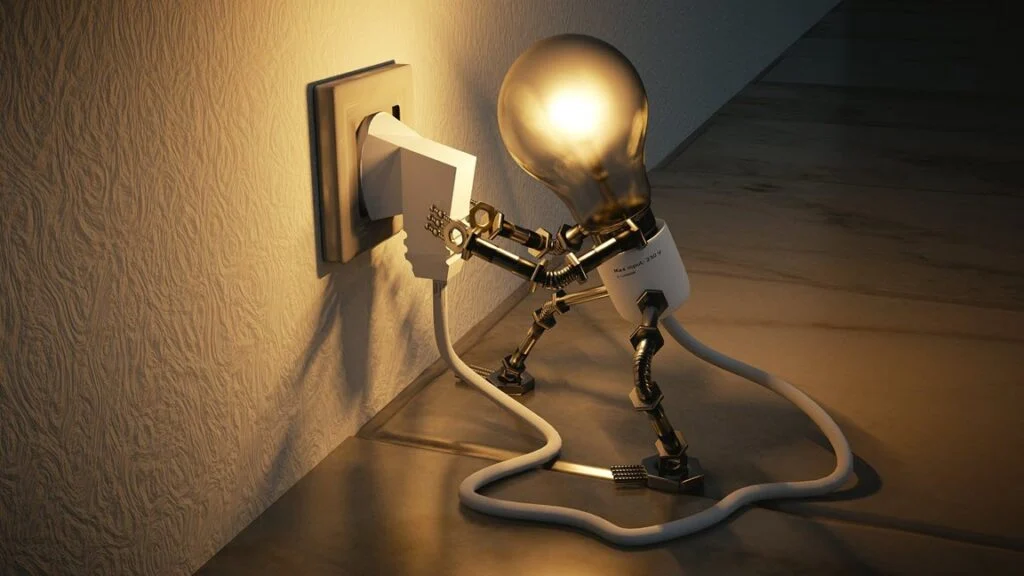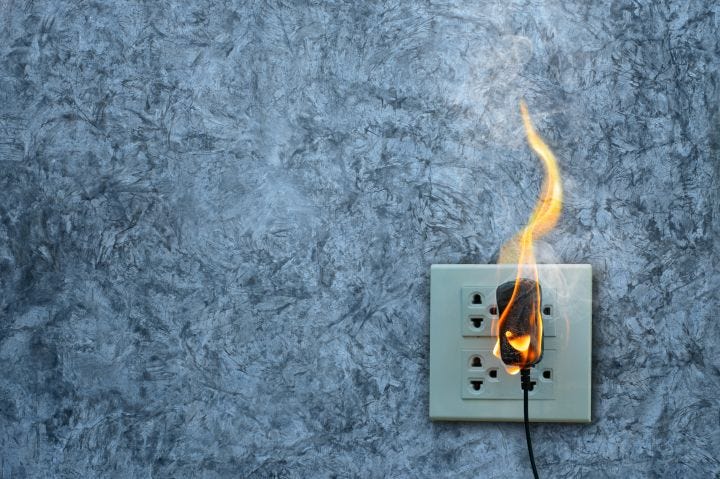
Trade services are essential to the world economy since they help with the interchange of products, services, and resources. They engage in business and acquire and sell products among other varied activities. Regarding trade services, one thing is always constant: they must be routinely checked on and corrected. It can help the business grow, save energy, and make the future more sustainable. That’s why this article will talk about why you should check your power often. By learning how important it is to keep their electricity in good shape, people and businesses can make sure they have a steady power source, a cleaner environment, and better energy use. That being said, let’s talk about why it’s important to check your power often these days.
The Importance of Checking Your Electricity Regularly
It’s very important to check your power often to stay safe and avoid problems. A good way to keep your power in good shape is to check the batteries in your tools. Leaks or cracks in the battery can cause rust to form, which can damage the device, stop it from working right, or even start a fire or explosion.
If you check your batteries every day, you can find any rust or damage early on. You can keep the device from getting worse and lower the risks that come with it if you find these problems early on. Plus, being able to quickly switch out the batteries after early spotting keeps your electronics running well.
Unchecked battery corrosion or damaged batteries pose serious dangers to both your property and personal safety. The risk of fires or explosions is significantly increased when batteries are not regularly inspected. Taking the time to check your electricity and inspect your batteries can save you from potentially catastrophic events and expenses.
Understanding the Basics of Energy Providers and Prices
Understanding the basics of energy providers and prices is crucial for individuals and businesses alike. Energy providers play a fundamental role in supplying electricity to consumers, while energy prices determine the cost of using this vital resource. By gaining knowledge about energy providers and prices, consumers can make informed decisions, manage their energy consumption effectively, and potentially save money. In this article, we will explore the importance of understanding energy providers and prices, and highlight key factors to consider when evaluating different options. Whether you are a homeowner, a small business, or a large corporation, having a clear understanding of the energy market can empower you to make smart choices and optimize your energy usage.

Different Types of Energy Providers
Different types of energy providers supply electricity to households and businesses. These providers vary in their origin and retail structure, offering customers a range of options when it comes to choosing their electricity supplier.
One type of energy provider is the not-for-profit municipal electric utility. These utilities are owned by local governments and operate within specific geographic areas. They are often governed by a board of elected officials who oversee the operations and set the rates. Not-for-profit municipal electric utilities prioritize providing affordable and reliable electricity to their communities.
Another type of energy provider is the electric cooperative. These are member-owned organizations that serve specific rural areas. Electric cooperatives are owned and governed by the members themselves, who elect a board of directors to manage the cooperative. The primary mission of electric cooperatives is to provide reliable electricity and support the economic development of their communities.
Lastly, there are investor-owned utilities, which are for-profit companies owned by shareholders. These utilities operate in a competitive market and are regulated by government agencies to ensure fair pricing and quality of service. Investor-owned utilities often serve larger metropolitan areas and aim to maximize profits for their shareholders.
How Prices Are Determined for Energy Services
The prices for energy services are determined by various factors in the market. One of the key influences on pricing is market prices, which are determined by the supply and demand dynamics of the energy market. When demand is high and supply is limited, prices tend to increase. Conversely, when supply exceeds demand, prices are likely to decrease.
Another factor that impacts pricing is the type of energy plan chosen by consumers. There are two main types of energy plans: fixed-rate and variable-rate plans. Fixed-rate plans offer a set price for a specific period, regardless of market fluctuations. This provides stability and predictability for consumers. On the other hand, variable-rate plans fluctuate based on market prices. While these plans may offer lower rates during times of low demand, they can also be subject to sudden price spikes during high-demand periods.
Each type of energy plan has its benefits and disadvantages. With fixed-rate plans, consumers have the peace of mind of knowing exactly what their energy costs will be each month, regardless of market fluctuations. However, if market prices drop significantly, fixed-rate plan customers may miss out on potential savings.
Variable-rate plans, on the other hand, allow consumers to take advantage of lower market prices during times of low demand. However, they also expose consumers to price volatility and potential increases during peak demand periods.
Consumers need to consider not only the pricing structure but also additional fees associated with energy plans, such as early-cancellation fees. Early cancellation fees can be substantial and should be taken into account when choosing an energy plan. It is crucial to carefully review the terms and conditions of the plan before signing up to avoid any unexpected costs.
Factors that Affect Energy Prices in Europe and the US
Energy prices in both Europe and the US are influenced by various factors. One significant factor is market price fluctuations. Energy markets are subject to volatility due to factors such as supply and demand imbalances, geopolitical events, and changes in global energy prices. These fluctuations can directly impact the cost of energy for consumers.
Another factor that influences energy prices is the level of energy demand. Higher energy demand often leads to higher prices as suppliers struggle to meet the increased consumption. Conversely, periods of low demand can result in lower energy prices.
Energy taxes imposed by governments also play a role in determining energy prices. These taxes are often used as a means to encourage energy conservation and promote the use of renewable energy sources. The level of taxation varies across countries, which can have an impact on the final cost of energy for consumers.
Construction costs associated with energy infrastructure projects can also affect energy prices. The cost of building power plants, pipelines, and transmission lines can significantly impact the overall price of energy.
Intra-Industry Trade and Its Impact on Costs
Intra-industry trade refers to the exchange of similar goods and services between countries that are at similar stages of development and have similar economic characteristics. This type of trade often occurs within industries where countries have a comparative advantage in producing specific products or services. Intra-industry trade can have a significant impact on costs, as it promotes competition and specialization, leading to increased efficiency and lower prices for consumers. By participating in intra-industry trade, countries can benefit from economies of scale and access a wider range of products at competitive prices. Additionally, intra-industry trade fosters innovation and technological advancements, further driving down costs. Overall, the integration of countries through intra-industry trade can lead to more efficient allocation of resources and ultimately lead to economic growth and global welfare.
What is Intra-Industry Trade?
Intra-industry trade refers to the exchange of goods and services within the same industry between countries. It plays a significant role in determining energy costs and can have a profound impact on a country’s economy.
Countries with different comparative advantages engage in intra-industry trade to lower costs and increase economic efficiency. For example, a country that is proficient in renewable energy production may export excess energy to a country that lacks the resources to generate enough domestically. This trade allows both countries to benefit from lower costs and increased availability of energy.
The key factors that drive intra-industry trade include specialization, economies of scale, and technological advancements. Specialization allows countries to focus on producing goods and services they have a comparative advantage. This leads to greater efficiency and lower costs. Economies of scale enable increased production, resulting in cost reductions. Technological advancements further enhance productivity and facilitate cross-border trade.
Intra-industry trade also fosters a more diverse and competitive energy market. By allowing countries to trade in the same industry, it encourages innovation, fosters competition, and expands consumer choices. This promotes economic growth and leads to further decreases in energy costs.
Overall, intra-industry trade is essential for lowering energy costs and increasing economic efficiency. It enables countries to leverage their comparative advantages, engage in specialization, and benefit from economies of scale. This ultimately leads to a more diverse and competitive energy market, benefiting both producers and consumers.
How Intra-Industry Trade Impacts Energy Costs
Intra-industry trade plays a significant role in influencing energy costs. As countries engage in this type of trade, they can tap into comparative advantages and leverage specialization, resulting in lower energy costs. By importing energy from countries that possess abundant resources or advanced technology in energy production, countries can achieve cost savings and increase their energy availability.
Furthermore, the increasing global interconnectedness of energy markets has a direct impact on energy prices. As energy markets become more integrated, fluctuations in supply and demand across different regions can affect prices globally. For example, disruptions in energy production in one country may lead to an increase in energy prices in another country that relies on imports. The rise of automated trading algorithms has further contributed to price volatility, as these algorithms can quickly react to market conditions and execute trades.
The expansion of trading desks and the emergence of new commodities have also influenced the competition among energy and commodities firms. With the introduction of new energy commodities, such as renewable energy certificates or carbon credits, trading desks have expanded their offering and diversified their portfolios. This increased competition among firms has further driven down energy costs as they strive to attract more customers and gain a larger market share.
Comparing Electricity Suppliers and Rates
When it comes to electricity, it’s important to regularly check your options and compare different suppliers and rates. The competitive landscape of the energy market has created a wide range of choices for consumers, with various providers offering different rates and plans. By taking the time to compare electricity suppliers and rates, you can ensure you are getting the best possible deal and potentially save on your monthly energy costs. Additionally, comparing suppliers allows you to consider additional factors such as customer service, reliability, and the environmental impact of the energy sources. In this article, we will explore the importance of comparing electricity suppliers and rates and how they can benefit both your finances and your overall energy consumption.
Comparing Local Suppliers to National Suppliers
When it comes to trade services in the electricity industry, there are two main types of suppliers: local suppliers and national suppliers. Understanding the differences between these two can help consumers make informed decisions about their electricity needs.
Local suppliers operate within a specific geographic area, typically servicing a specific city or region. They are often smaller, locally-owned businesses that cater to the needs of the local community. Local suppliers have a strong presence and understanding of the specific challenges and demands within their area of operation.
On the other hand, national suppliers have a broader reach across the entire country. They operate on a larger scale and have the ability to serve customers in multiple geographic areas. National suppliers generally have more resources and infrastructure in place to provide electricity services across a wider network.
Both local and national suppliers have advantages and disadvantages. Local suppliers offer personalized service and a deep understanding of the local market. They often have strong relationships with local customers and can address their specific needs. However, local suppliers may have limited resources and their prices may be higher compared to national suppliers.
National suppliers, on the other hand, offer a wider range of services and often have lower prices due to economies of scale. They can offer competitive rates and different types of plans to meet the diverse needs of customers across the country. However, national suppliers may sometimes lack the personal touch and understanding of a specific local area.
Ultimately, the choice between a local or national supplier depends on individual preferences. Some customers may prioritize personalized service and supporting local businesses, while others may prioritize cost savings and convenience. It is important to carefully evaluate the advantages and disadvantages of each type of supplier before making a decision.
Factors to Consider When Comparing Electricity Rates
When comparing electricity rates from different suppliers, there are several factors that customers should consider to ensure they are getting the best value for their money. These factors can greatly impact the overall cost and value of electricity services. Here are some key factors to consider:
- Type of plan: Customers should determine whether the electricity plan is fixed or variable. A fixed-rate plan offers a consistent rate throughout the contract period, providing stability and predictability. On the other hand, a variable-rate plan may fluctuate based on market conditions, which can lead to potential savings but also pose a risk of higher rates.
- Length of contract: Customers should review the length of the contract offered by the supplier. Longer-term contracts may offer lower rates, but they also lock the customer into a specific rate for a longer period. Shorter-term contracts provide more flexibility but may have higher rates.
- Additional fees: It’s important to consider any additional fees associated with the electricity plan. These can include early termination fees, installation fees, and maintenance fees. Customers should carefully review the terms and conditions to understand the total cost of the plan.
- Customer reviews: Checking customer reviews and ratings can provide valuable insights into the quality of service and customer satisfaction. Online platforms and review websites can help customers assess the reliability and reputation of different suppliers.
- Renewable energy options: With a growing focus on sustainability, customers may want to consider suppliers that offer renewable energy options. These plans may include a higher percentage of energy generated from renewable sources, such as wind or solar. Customers interested in reducing their carbon footprint should evaluate the availability of green energy options.
By taking into account these factors, customers can make an informed decision when comparing electricity rates and choose a supplier that best meets their needs in terms of cost, contract terms, and environmental impact.

Exploring Credit Card and Debit Card Use for Payment of Energy Services
In today’s digital age, the use of credit cards and debit cards has become increasingly common for making various payments, including energy services. This convenient payment method offers customers the flexibility to easily manage their energy expenses and avoid the hassle of carrying cash or writing checks. By utilizing credit or debit cards for payment, customers can monitor their energy usage, track their expenses, and enjoy the added security and rewards that come with these financial tools. In this article, we will explore the benefits and considerations of using credit cards and debit cards for the payment of energy services, highlighting how this method can simplify the process and provide a host of additional advantages for customers.
What are Credit Cards & Debit Cards?
Credit cards and debit cards are both popular methods of payment in today’s digital world. While they serve a similar purpose of facilitating transactions, there are some key differences between the two.
Credit cards enable users to borrow money from their card issuer to make purchases. This borrowed amount needs to be paid back, usually with interest, within a given timeframe. In contrast, debit cards are directly connected to the user’s bank account, allowing them to make electronic payments using the funds available.
One advantage of credit cards is the flexibility they offer. Users can make purchases even if they don’t have sufficient funds immediately, relying on the ability to pay it back later. Credit cards also often come with additional benefits like rewards programs and purchase protection. However, the possibility of accumulating debt and paying interest can be a significant disadvantage.
Debit cards, on the other hand, have the advantage of allowing users to spend only the amount they have in their bank account, preventing excessive borrowing and potential debt accumulation. Additionally, there is no interest to be paid on debit card transactions. However, debit cards may not offer the same level of consumer protection as credit cards, and they may have limited fraud liability protection.
Advantages & Disadvantages of Using Credit/Debit Cards for Paying Electric Bills
Using credit or debit cards to pay electric bills offers both advantages and disadvantages. One advantage is the convenience it offers – users can easily make payments online or via mobile apps, eliminating the need for checks or cash. Additionally, using credit cards may provide rewards or cashback incentives, allowing users to earn benefits for their payments.
However, there are some disadvantages to consider as well. One major drawback is the potential for interest charges. If the cardholder does not pay off the balance in full each month, interest charges can accumulate, increasing the cost of paying the electric bill. In addition, some credit or debit cards may have fees associated with using them for bill payments.
Credit reports play a crucial role in determining eligibility for credit cards. Lenders review an individual’s credit report to assess their creditworthiness before approving applications. A good credit report with a history of timely payments may increase the likelihood of getting approved for a credit card with favorable terms and conditions.
To make the most of credit or debit cards, it is important to monitor credit reports regularly to spot any inaccuracies or signs of identity theft. It is also essential to be cautious of scams that target cardholders, such as phishing attempts or unauthorized charges.
Conclusion
In conclusion, regular monitoring of one’s electricity is crucial for several reasons. Firstly, by checking electricity usage regularly, individuals can identify any potential issues or malfunctions in their electrical systems, preventing any major problems from occurring in the future. Additionally, monitoring electricity usage allows individuals to track their energy consumption and make adjustments to reduce their energy costs and promote energy savings. This is especially important in today’s world, where energy prices and demand are constantly fluctuating.






